Search
11359 Corrosion Failures in Atmospheric Residue-Desulphurizer Unit after the Revamp (ARDS)
Also Purchased
10350 Erosion of Austenitic Stainless Steel 90° Elbows of Charge Heater Tubes in Atmospheric Residue De-Sulphurization Unit (ARDS) of Mina Abdulla Refinery
Product Number:
51300-10350-SG
ISBN:
10350 2010 CP
Publication Date:
2010
$20.00
07694 Guideline for material selection and qualification of wear and corrosion protective hard face coatings for piston rods
Product Number:
51300-07694-SG
ISBN:
07694 2007 CP
Publication Date:
2007
$20.00
07RTS7 Overview of Recent Three-Dimensional, Small Scale, Mini-Pipe Testing of Carbon Steel Well Tubulars with Internal Pressure, Axial Load, and Internal/External H2S Exposure
Product Number:
51300-07RTS7-SG
ISBN:
07RTS7 2007 CP
Publication Date:
2007
$20.00




